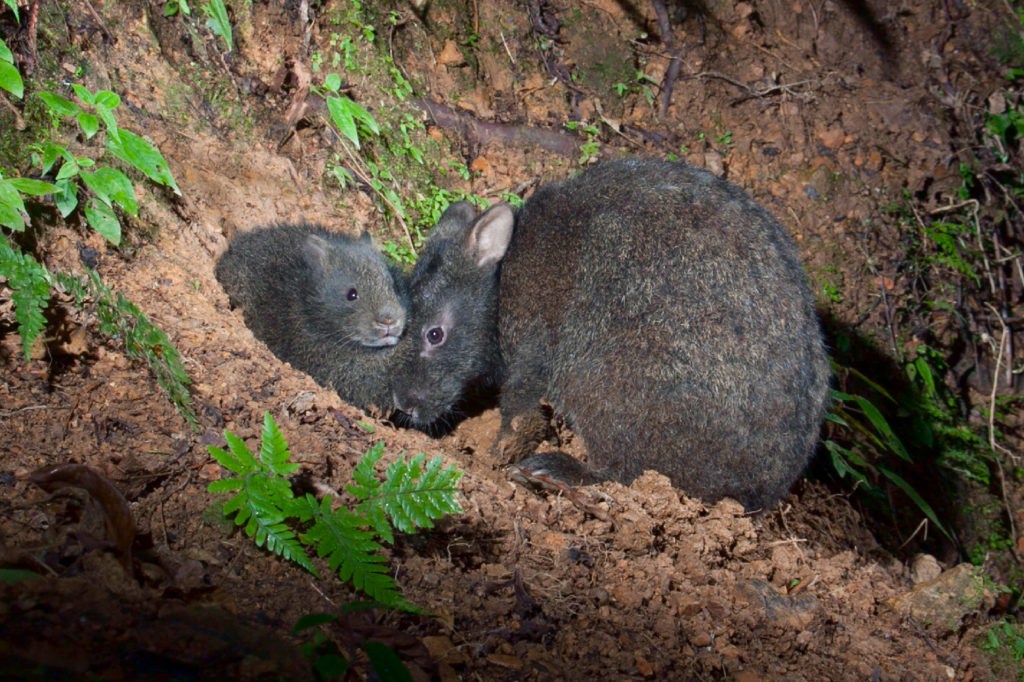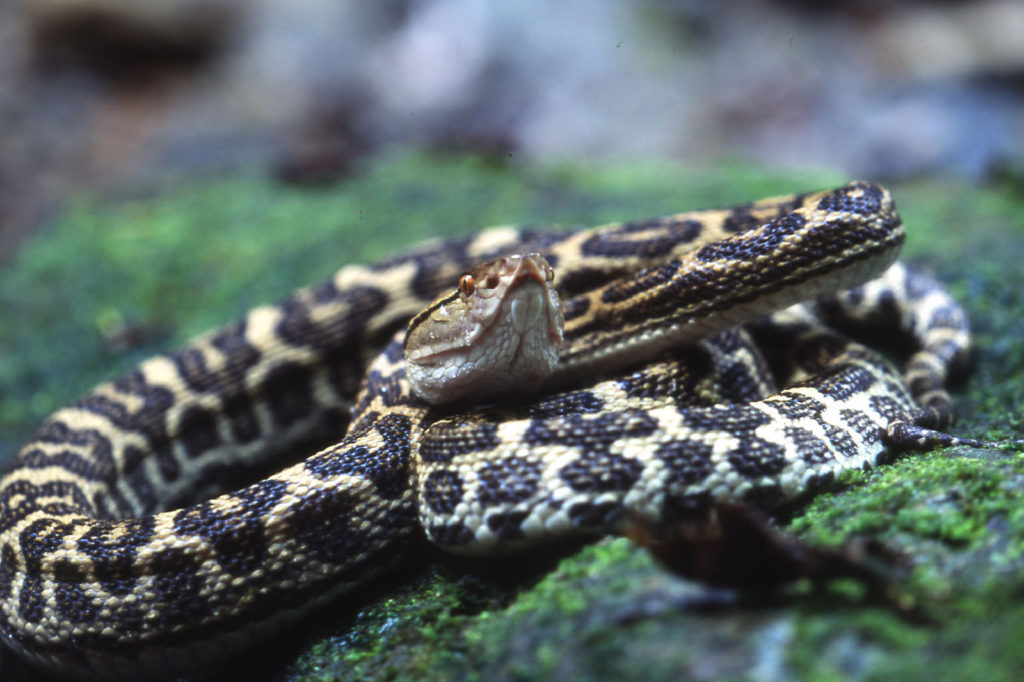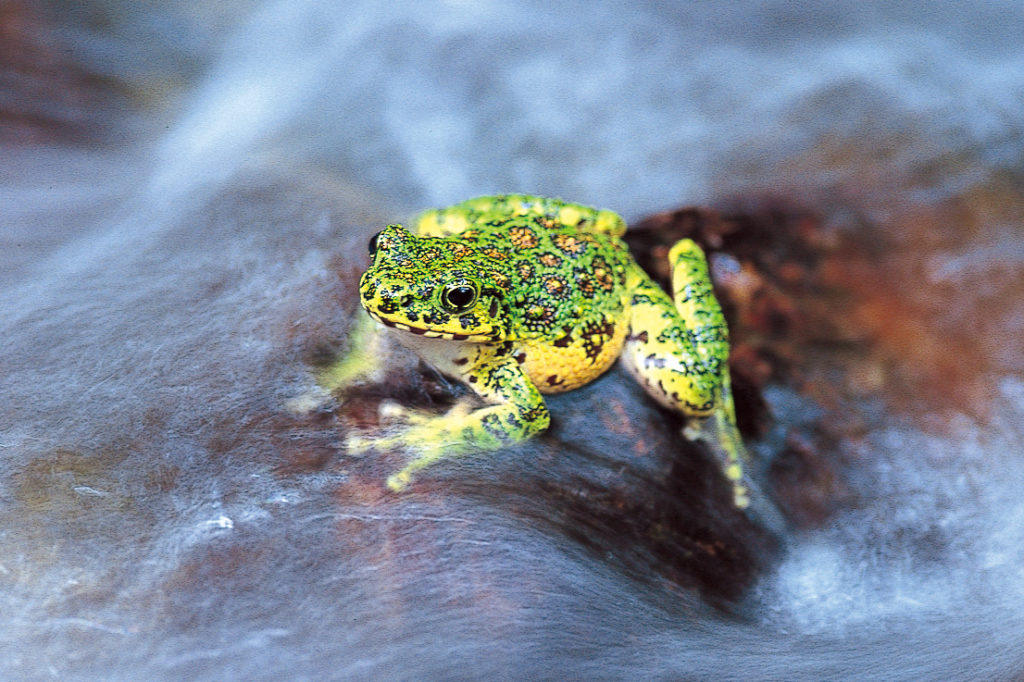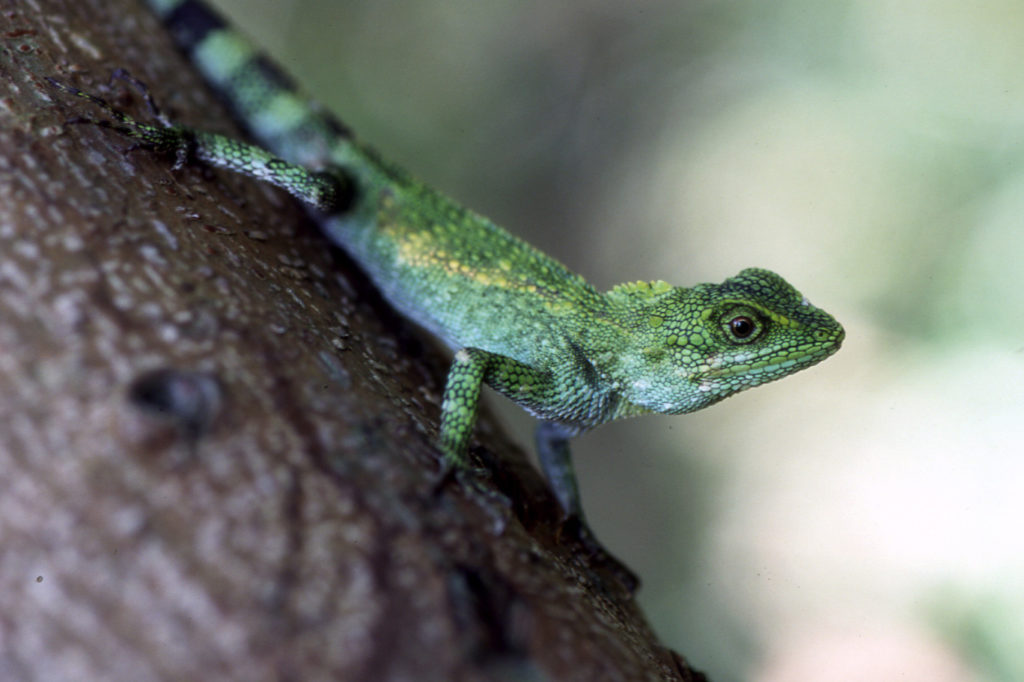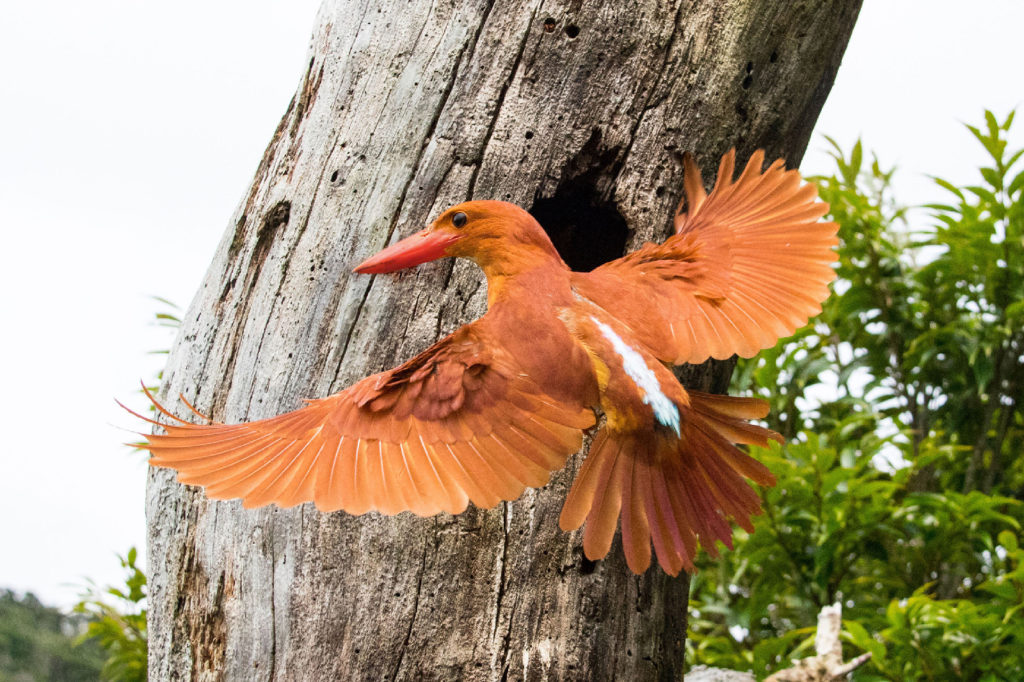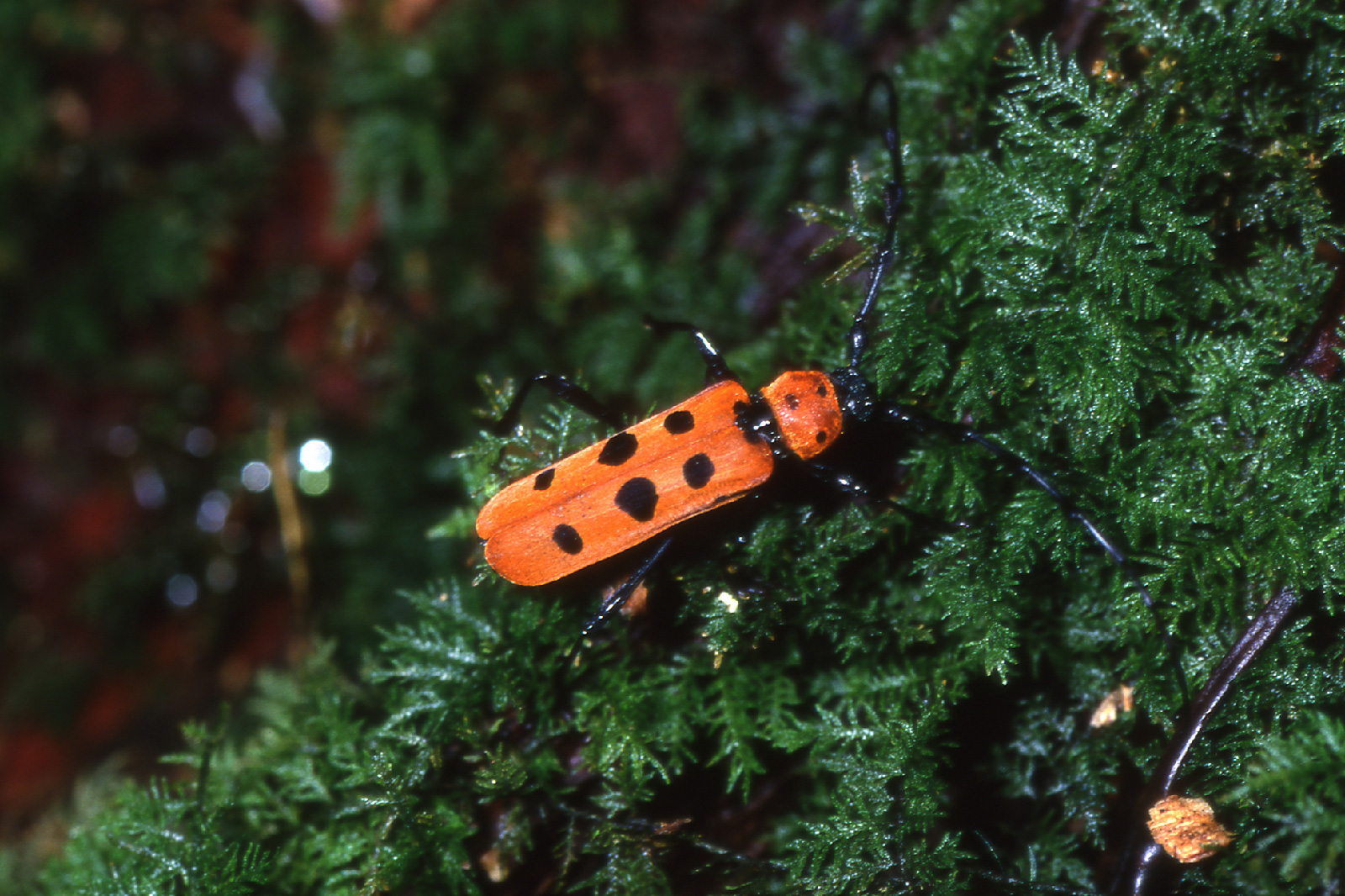
Animals of Forest
Insects
Insects in the Amami islands
Insecta in Amami archipelago has a unique feature representing, centered at those retain strong influence from southern mainland China, its trace of two distinctive groups: insects migrated to north from the southern regions and insects branched from those originated in the northern regions in the ancient era. Sharing the habitat environment, each group contains individual species evolved into endemic species or subspecies after the Amami region was separated from the mainland to form various islands.
The Amami islands has approx. 80 butterfly species. Among which, 30 species was brought to the region by monsoons and typhoons.
Red milkweed beetle (Eurybatus ferriei)
A beautiful longhorn beetle only seen in Amami Oshima island. Found by Father Ferrier who came to the island as a missionary in the Meiji period (late 1890s to early 1900s).
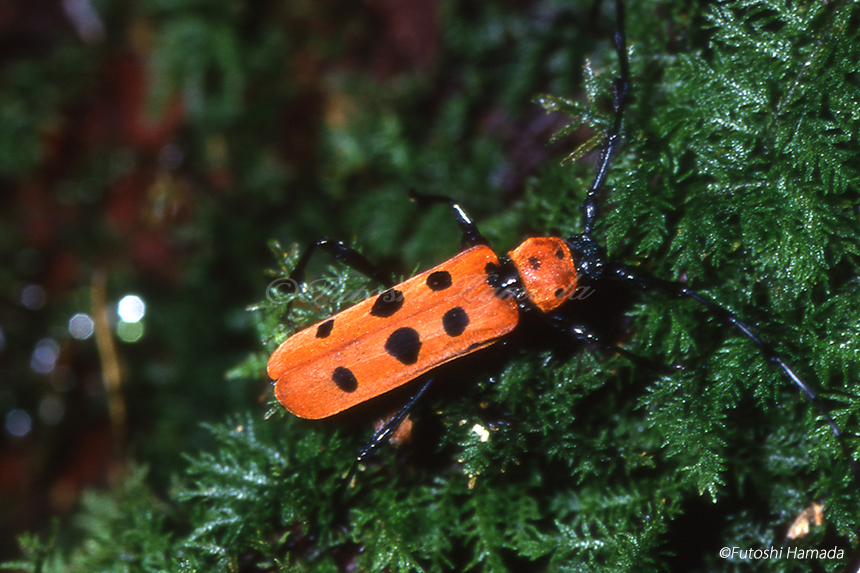
Red milkweed beetle (Eurybatus ferriei)
Amami marubane kuwagata stagger beetle (Neolucanus protogenetivus)
Only seen in Amami Oshima island, Ukejima island, and Tokunoshima island. This stagger beetle with distinctive jaws prefers damp hollows on Itajii trees (Castanopsis sieboldii).
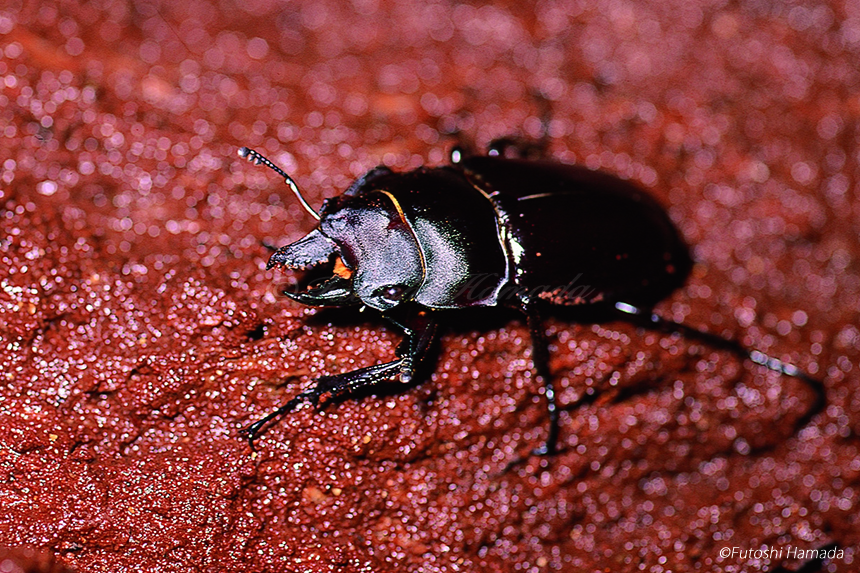
Amami marubane kuwagata stagger beetle (Neolucanus protogenetivus)
Red ring skirt (Hestina assimilis)
This butterfly species stays only in Amami Oshima island. An endemic subspecies.

Red ring skirt (Hestina assimilis)
Paper kite butterfly (Idea leuconoe)
The largest butterfly in Japan with 12-14 cm width of open wings. Kikaijima island is the northern limit (Note: Some suggests they were brought by human). Taking this species as its symbolic figure, Kikaijima island has an ordinance for protection of paper kite butterflies.
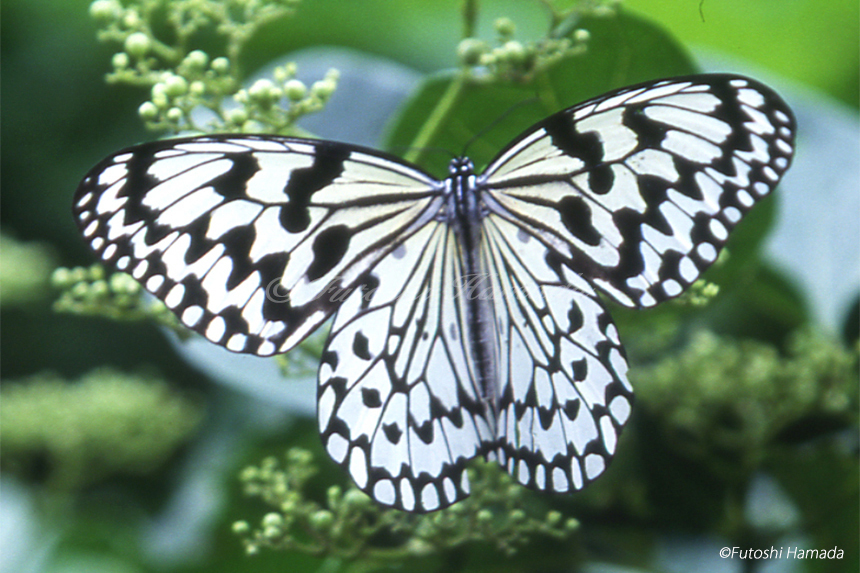
Paper kite butterfly (Idea leuconoe)
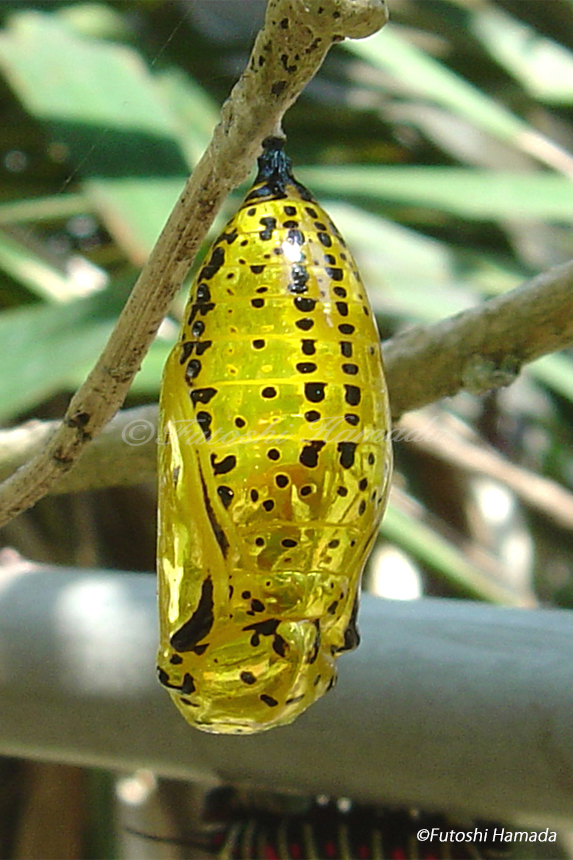
A chrysalis of a paper kite butterfly
Ceylon blue glassy tiger (Ideopsis similis)
These butterflies are found in Amami Oshima island and southward, and they become inactive and form a group when the temperature is below 15℃ (59F)

Ceylon blue glassy tiger (Ideopsis similis)
Photo and captions / HORIZON Editorial Office
